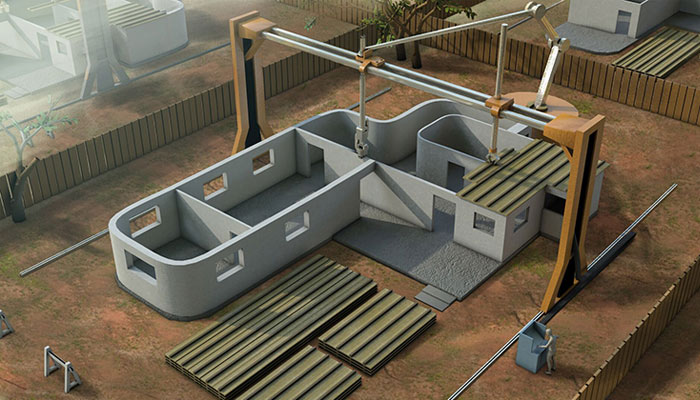As we move through the changing landscape of innovation, one innovation stands prominently in the field of infrastructure: 3D manufacturing. This exceptional technology is transforming the way developments and structures are designed and assembled, introducing a new era of efficiency, environmental responsibility, and innovation.
Reshaping Building: One Layer at a Time
The adoption of 3D printing in infrastructure offers numerous revolutionary advantages. Chief among these is the drastic reduction in resource excess. Traditional infrastructure methods commonly lead in considerable excess substances that lead to sustainability-related waste. In comparison, 3D manufacturing applies a meticulous layer-by-layer approach, employing only the required quantity of substance and thus minimizing surplus greatly.
Another noteworthy advantage is the immense reduction in building period. Projects that historically take months can be completed in a fraction of the timeline with 3D manufacturing technologies. This acceleration is due to the automated mechanism of 3D printers that can work 24/7 without worker assistance, greatly shortening overall project schedules.
Moreover, 3D manufacturing unlocks prospects for constructing intricate, personalized designs at no additional expense. The flexibility of 3D printers permits for elaborate frameworks and shapes to be produced that would either be highly pricey or unfeasible to attain with traditional infrastructure approaches. This function not only improves design beauty but also allows designers to maximize layouts for enhanced functionality and durability.

Lowering Costs and Boosting Reachability
Expense reduction is yet another significant advantage delivered by 3D manufacturing in infrastructure. By cutting workforce spending and shortening the timeline needed to complete undertakings, the total cost linked to developing frameworks is minimized. Additionally, low-cost 3D manufacturing units are growing more attainable, making this innovation attainable for smaller firms and independent creators keen to explore its potentials.
The budget-friendliness of these devices also enables innovation in related sectors such as garment printing. While primarily acknowledged in building industries, the scope of 3D printing expands into various fields including apparel. Here, creators innovate with 3D printed garments, expanding creative boundaries and redefining material design while utilizing cost-effective production expenditures.
An Eco-Friendly Vision Powered by Progress
Sustainability is another pillar of this method’s appeal in the construction industry. 3D manufacturing promotes a eco-conscious method to construction by reducing resource waste and resource expenditure. Moreover, it enables the use of eco-friendly substances like recycled plastics or blended materials, which further reduces the carbon effect of this historically heavy-polluting industry.
The international movement towards sustainable methods finds a powerful supporter in 3D fabrication technologies, possibly revolutionizing how structural guidelines and requirements are developed in the future. By implementing these cutting-edge processes, the construction sector steps closer to achieving greener functional practices.
Transforming Dreams to Reality
Visualize neighborhood facilities in low-income neighborhoods being built within weeks to address urgent needs or architects crafting marvels inspired by organic structures that harmonize effortlessly into their landscapes – such concepts are not just hypothetical but are fast becoming achievable through 3D manufacturing.
While these breakthroughs signify just the start, they indicate a future where development harmonizes seamlessly with both human dreams and ecological responsibility.
If we advance on this course, infrastructure will not only signify the physical creation of structures but also signify a pledge to innovative mindsets and responsible living. Connecting imagination with functionality, 3D manufacturing is ready to transform our tangible reality in ways we are just beginning to grasp.
Through constant progress and an adoption of these forward-thinking methods, our developed environments will certainly morph into manifestations of human ingenuity powered by the precision and endless potential of 3D fabrication.
More details about may in 3d gia rebrowse our web portal
